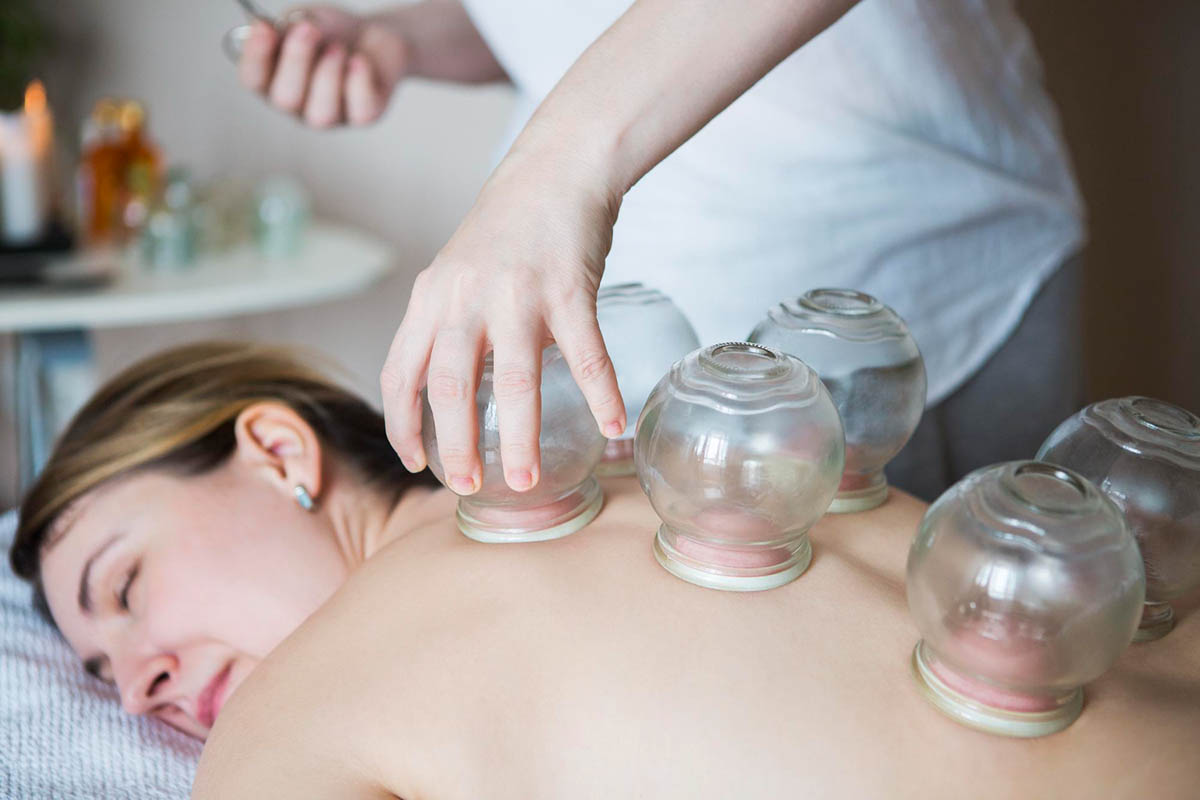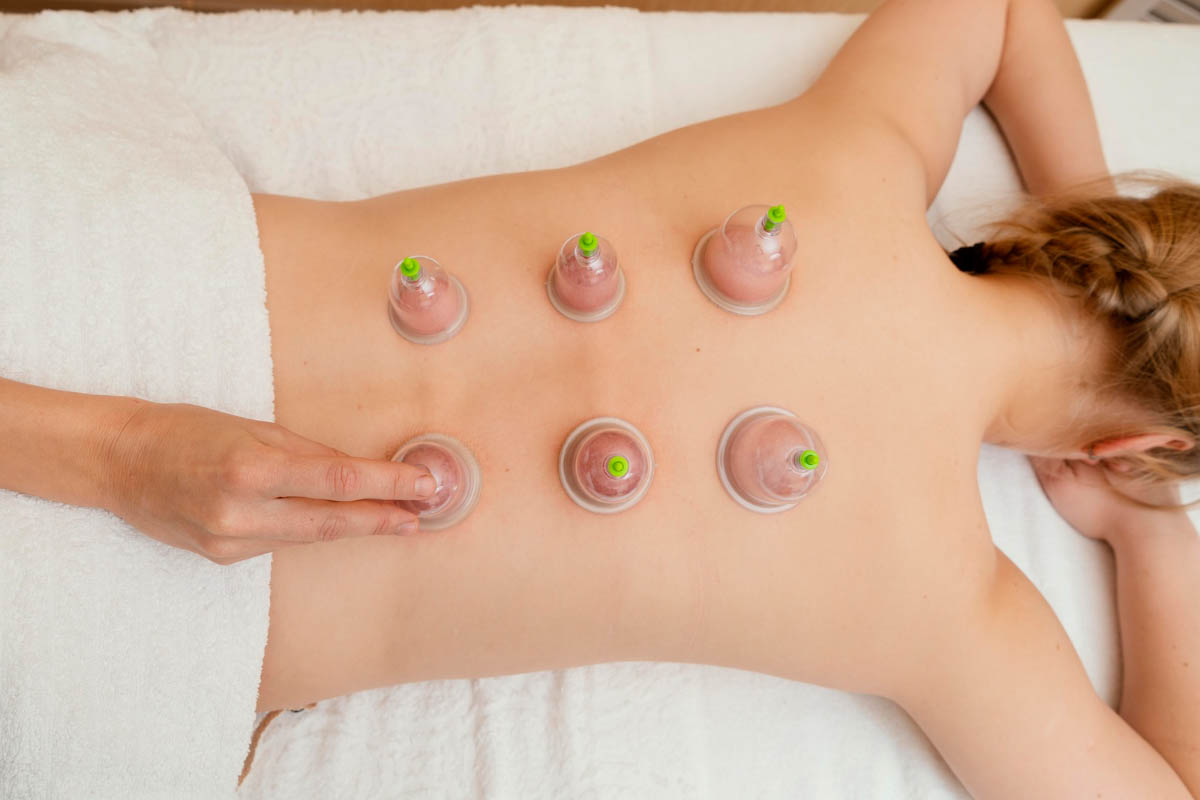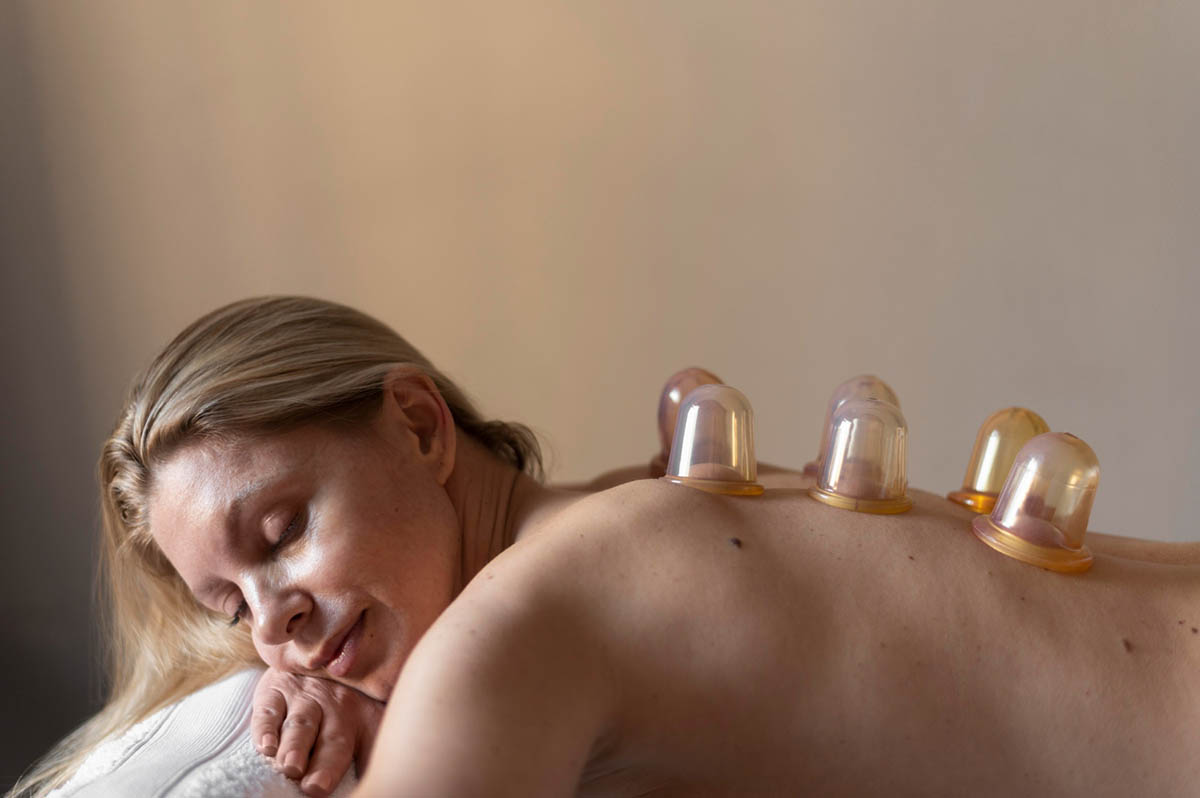Cupping therapy, an ancient practice that has found its way into modern physical therapy, offers a range of health benefits for those seeking natural pain relief and healing. This non-invasive treatment uses suction to promote blood flow, reduce inflammation, and ease muscle tension. Whether used as a standalone treatment or alongside acupuncture, cupping therapy has gained popularity for its therapeutic effects in physical therapy settings.
What is Cupping Therapy?
Cupping therapy is an ancient form of alternative medicine used in physical therapy to treat a variety of medical ailments, such as chronic neck pain, muscle soreness, and connective tissue disorders. It is often seen as a complementary treatment to physical therapy. While modern medicine perspective views cupping as a supportive technique, its origins in Eastern cultures and ancient treatment methods have long been valued for promoting overall health and well-being. In physical therapy cupping, suction is created to stimulate blood vessels, neural tissues, and lymphatic flow, promoting healing in affected areas. This form of treatment is also known as myofascial decompression, as it targets muscle fibers and tissue distraction release to relieve tension.
History of Cupping Therapy
The origins of cupping therapy date back as far as 1500 B.C., rooted in ancient Egyptian, Chinese a.k.a “Chinese Medicine”, and Middle Eastern healing practices. Where it was used to treat health conditions like muscle pain, respiratory issues, and more. Today, cupping in physical therapy has evolved into a highly respected method, recognized for its effectiveness in enhancing range of motion and relieving pain.
Cupping has remained an integral part of traditional Eastern cultures for centuries, where it was used not only to treat pain but also to regulate blood pressure and improve the body’s circulation. This ancient treatment method has now found a place in contemporary health practices, where it is used to address a variety of physical ailments.
But what is cupping used for in physical therapy? Primarily, it is applied to relieve muscle tension, enhance blood flow, and reduce inflammation. It’s also beneficial for treating musculoskeletal issues, improving mobility, and speeding up recovery from injuries.
Types of Cupping Therapy
There are several cupping methods used in alternative therapy today, ranging from traditional wet and dry cupping to more modern adaptations that employ negative pressure to stimulate healing. Each method is tailored to the individual’s needs and the type of ailment being treated. Some of the most common types include:
Wet Cupping Therapy
Wet cupping, sometimes referred to as tissue distraction release, involves small incisions to remove blood, improving lymphatic drainage and flow to body tissues. This method is highly effective for relieving scar tissue adhesion and deep tissue massage benefits.
Dry Cupping Therapy

In dry cupping, suction cups are placed on the skin without any incisions. This is the most common form of cupping used in physical therapy cupping, and it’s known for relieving muscle pain and improving range of motion. Some cupping techniques use rubber pumps or an air pump to create the necessary suction.
Benefits of Cupping Therapy
Cupping therapy offers a wide range of benefits, especially for those suffering from chronic pain or skin conditions. Strong clinical evidence shows that cupping therapy leads to significant pain reduction, with noticeable improvements typically observed between 2 to 8 weeks after starting treatment. Here are some of the most notable benefits:
Cupping for Pain Management
Cupping is a well-known technique for managing patients with neck pain and other chronic conditions. By improving lymphatic flow and blood circulation, it reduces muscle pain and increases the pain threshold. Renowned athletes like Olympic athletes have utilized cupping for its benefits in enhancing performance and recovery. The effects of suction from cupping can help with both acute and chronic muscle pain.
Cupping for Acne
Cupping can also address skin issues, such as acne, by increasing blood flow and aiding the body’s natural detoxification process. However, people with sensitive skin should be cautious, as cupping can leave cupping marks or bruising.
Cupping with Acupuncture
The combination of cupping with acupuncture for pain is often used in alternative medicine to amplify the benefits. This pairing has become a viable treatment option for those seeking holistic methods to relieve muscle pain and improve range of motion.
What Does Cupping Therapy Do?
Cupping therapy helps separate connective tissue and nerve fibers, which increases circulation to affected areas. It’s often compared to deep tissue massage but uses suction cups to achieve similar effects without applying pressure directly. The therapy promotes flow to body tissues and improves lymphatic drainage, making it an effective option for a wide range of health conditions.
Procedure Details
The cost of suction cups used in cupping therapy can vary depending on the type of materials, ranging from inexpensive silicone cups to higher-end glass cups. Regardless of the cupping methods used, all forms of cupping rely on the principle of creating negative pressure to stimulate healing in the underlying tissues.
Curious about how cupping therapy works? Here’s what to expect during the procedure:
How Does Cupping Work?
In cupping therapy, cups are placed on the skin, and the air inside the cups is heated or suctioned out to create a vacuum. This vacuum draws the skin and underlying tissue upward, promoting circulation and releasing muscle tension.
How Do Healthcare Providers Perform Cupping?
During a cupping session, healthcare providers carefully place the cups on the skin, and it is generally recommended that they remain in place for no longer than 5 to 10 minutes. This time frame is ideal for maximizing benefits while minimizing the risk of skin irritation or discomfort.
In physical therapy, there are several cupping techniques to address different health conditions:
- Dry Cupping: Uses glass cups, silicone cups, or metal cups with an air pump to create a vacuum on the skin, promoting blood flow and relieving tension.
- Running Cupping: The therapist moves the cups along the skin, promoting cross fiber massage.
- Wet Cupping: Involves making small incisions and drawing blood, which helps relieve scar tissue adhesion and improve lymphatic flow.
What Type of Cups Do They Use?
Different cups are used in cupping techniques, including glass cups, bamboo cups, ceramic cups, and silicone cups. The choice depends on the technique used and the health condition being treated.
- Bamboo: Often used in traditional practices, bamboo cups are light and breathable, providing a more gentle experience.
- Ceramic: Ceramic cups are heavier and require more skill to handle, but they offer stronger suction.
- Metal: Metal cups are durable and ideal for deeper, more intense suction treatments.
- Silicone: Silicone cups are flexible and are used for running cupping, where the therapist moves the cups along the body.
What Should I Expect After Cupping?
After a cupping session, it’s common to see cupping bruises or post-treatment marks on the skin. These cupping marks are temporary and indicate improved circulation in the affected areas. Some patients may experience soreness, but the adverse effects are usually mild. If you notice any risk of infection or prolonged discomfort, consult your healthcare provider.
Does Cupping Hurt?
For most, cupping doesn’t hurt, though it can feel like a strong pulling sensation. The therapy suction from the cups might leave cupping bruises, but these are normal and fade within days.
Who Performs Cupping Therapy?
Cupping therapy should be performed by certified professionals such as massage therapists, physical therapists, or athletic trainers who are trained in cupping techniques physical therapy.
Who Shouldn’t Get Cupping?

People on blood thinners, those with skin infections, or individuals with serious medical conditions should avoid cupping due to the potential risks involved, such as the risk of infection.
How Effective is Cupping?
Cupping therapy is highly regarded for its ability to relieve muscle pain and enhance range of motion. Studies show its effectiveness for athletes, particularly for those dealing with chronic neck pain or other common ailments related to muscle tension. The satisfactory response seen in many patients makes cupping a viable, non-invasive treatment option.
When Should I Call My Healthcare Provider?
If you experience any adverse effects or notice persistent cupping bruises or skin infections, it’s important to call your healthcare provider to ensure proper care.
Conclusion
Cupping therapy offers a natural way to manage pain, improve circulation, and promote healing. Whether you’re seeking relief from chronic muscle tension or looking for ways to enhance your skincare routine, cupping can be an effective part of your health regimen. Always consult with a trained professional before starting therapy to ensure it’s right for you.
At Progressive Mobility, we combine advanced therapeutic techniques with personalized care to help our patients achieve long-term relief from pain and restore mobility. Our expert team offers Cupping Therapy as part of our holistic approach to wellness, effectively targeting muscle tension, improving circulation, and enhancing recovery. Whether you’re dealing with chronic pain, sports injuries, or post-surgical rehabilitation, our comprehensive Physical Therapy Services are designed to meet your unique needs, empowering you to get back to living your life to the fullest.
FAQs
Is Cupping Therapy Painful?
Cupping is usually painless, but those with sensitive skin might experience mild discomfort. The appearance of cupping marks or bruises is normal.
How Often Should I Get Cupping?
The average range for cupping therapy is one to two sessions per week, depending on the condition being treated. Consult with a physical therapy cupping expert for a personalized treatment plan.
Can I Perform Cupping at Home?
While there are suction cup kits available for home use, it’s best to consult a professional to avoid the risk of infection or improper technique.



